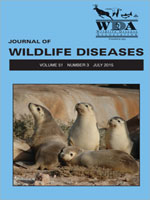Medical records of 931 reptiles admitted to the Australian Wildlife Health Centre, Healesville Sanctuary, Healesville, Victoria, Australia, from 2000 to 2013 were reviewed to determine the causes of morbidity and mortality. Thirty-nine species were presented; the most common were the common long-neck turtle (Chelodina longicollis; n = 311, 33.4%), the eastern bluetongue lizard (Tiliqua scincoides; n = 224, 4.1%), the blotched bluetongue lizard (Tiliqua nigrolutea; n = 136, 14.6%), and the lowland copperhead (Austrelaps superbus; n = 55, 5.9%). Trauma was the most significant reason for admissions, accounting for 73.0% of cases. This was followed by not injured (11.7%), displacement (6.4%), snake removal (4.2%), human interference (3.1%), introduced species (1.1%), sick/diseased (0.2%), and illegal pet (0.2%). Within the category of trauma, impact with motor vehicle (41.0% of trauma cases) and domestic animal attack (33.2% of trauma cases) were the most common subcategories. Our results indicate that indirect anthropogenic factors are a significant cause of morbidity and mortality in Australian reptiles.
How to translate text using browser tools
1 July 2015
Morbidity and Mortality of Reptiles Admitted to the Australian Wildlife Health Centre, Healesville Sanctuary, Australia, 2000–13
T. Franciscus Scheelings
ACCESS THE FULL ARTICLE

Journal of Wildlife Diseases
Vol. 51 • No. 3
July 2015
Vol. 51 • No. 3
July 2015
Blotched bluetongue lizard
common long-neck turtle
eastern bluetongue lizard
lowland copperhead
mortality
trauma




